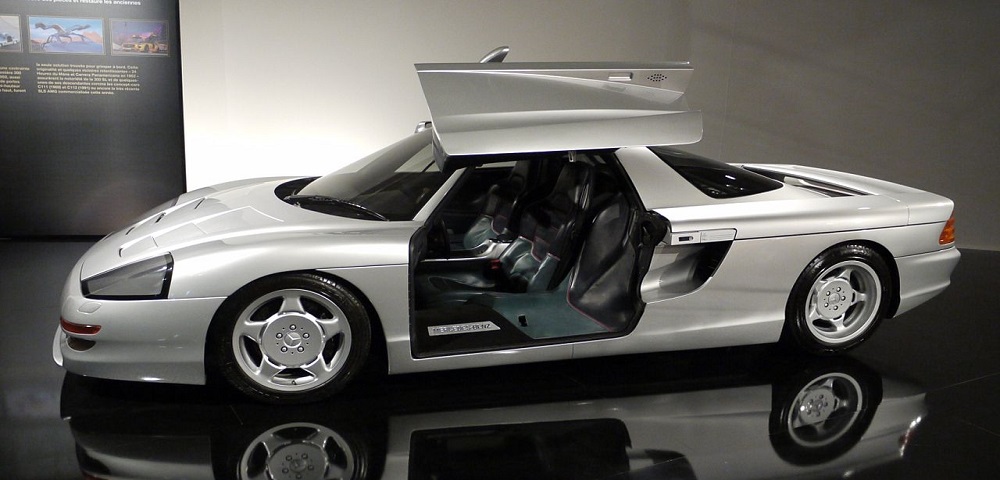
In 1991, Mercedes designed a road going version of the Sauber C11 Group C race car.
The Mercedes-Benz C112 was a road going race car based on the C11, a Group C prototype race car introduced for the 1990 World Sports-Prototype Championship. Built by Sauber as a successor to the Sauber C9.
May 30 ,2018
It was the first time that Mercedes-Benz chose to put their name on the car, instead of simply using Sauber. Following on the success of the Sauber C9, the Mercedes-Benz C11 was the last Group C prototype built by the Sauber Mercedes team before the introduction of the 3.5 litre category. Thus the road legal, V12 Mercedes C112 was born.
The C9 chassis had been constructed mostly from aluminium, the C11 was built from carbon fibre. The chassis was designed from scratch by Leo Ress, who had been with the team since the days of the Sauber C7, and the first example was built by local Swiss firm Nobrac ("carbon" spelt backwards). The remainder were built by DPS Composites in Surrey, UK whose principal, Dave Price, was also a team manager at Sauber. The new chassis was designed for more downforce with a lower frontal area. At 320 km/h it generated 2,666.7 kg of downforce, about 453.6 kg more than the C9 at the same speed. Unlike the Sauber C9, the new C11 did not have a low downforce/low drag configuration for Le Mans, that race not being a part of the championship season in 1990. The whole car was considerably slimmer in appearance than its older sibling and was both lighter and stiffer. Ballast was added to bring its minimum weight up to the required 900 kg with an extra 5 kilograms added for safety. Particular attention was paid to air entry and exit points around the wheel arches and the airflow through the cockpit was improved for driver comfort. The development program also included the use of a rolling road wind tunnel which was unique for Group C at the time. A new Mercedes 5-speed transaxle was designed with the rear suspension in mind and the previous longitudinal spring/damper design of the C9 was abandoned in favour of a transverse layout, actuated by push rods. This allowed for a better integrated rear end that was much stiffer than before, according to designer Leo Ress.
The front suspension remained similar to the older car with inboard transverse coil spring/damper units actuated by push rods. The brakes were Brembo and tyres were switched from Michelin to Goodyear. The 5 litre, twin-turbo Mercedes-Benz M119 engine was retained from the older car and was sourced directly from the Mercedes engine facility at Untertürkheim. It was developed by Willi Muller and Gerd Witthalm and was returned to Stuttgart after every race, the transmission remaining at the Sauber facility at Hinwil. In race trim, it was tuned to produce around 720 hp, which gave the best combination of power and efficiency for Group C, which was a fuel allocation formula.
The demand of a road going production vehicle of the same calibre was high, but it was never put into production. Such a shame to realise that this brute V12 powerhouse shall never be seen on the road.